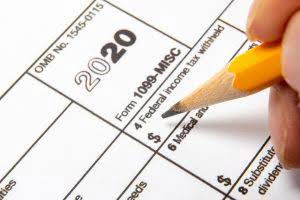Content

As shown above, to calculate your units of production rate, you’ll need the cost of the asset, the salvage value of the asset, and the estimated number of units you expect it’ll produce over its useful life. The depreciation formula is used to calculate the depreciation of a business’s fixed assets. The method first computes the average depreciation expense per unit by dividing the amount of depreciable basis by the number of units expected to be produced. This per unit figure is then multiplied by the number of units produced during the time period. For example, company ABC that is a manufacturing company bought a machine that costs $42,000 for day-to-day operation. The company estimated that the machine would be able to produce 100,000 units of the total production during its useful life.
Teams can track an asset’s value over time to get a clearer idea of how long it should remain functional. This allows them to budget for replacements if an item is wearing out or schedule maintenance after a certain number of units is produced. You can’t predict how long an asset will last and the number of units it will produce—but you can make an educated guess based on the IRS value expectancy and the production rate of similar assets. This depreciation method is popular in production-oriented industries because it can fluctuate based on machine demand for that year. The units of production depreciation method works to address this principle by tracking how much an item is used and using that to determine its value. Get to know this depreciation method better to see if it is right for you. The units of production depreciation is calculated in a two step process.
If units of input (e.g., operating hours, materials, or labor-hours) are more descriptive than cost incurred or benefit obtained , the firm can use them to determine the depreciation expense. For example, miles driven or flown might be most appropriate for a delivery truck or airplane, whereas units produced may be the most suitable for a lathe or other machine. While the estimated salvage value at the end of its life will be $20,000. Depreciation is a portion of the Company’s fixed assets considered as a decrease in value due to usage of assets. Depreciation is calculated by dividing the production for the period by the capacity and multiplying by the recoverable cost. Once the depreciation per unit is calculated, the overall depreciation expense can be calculated.
What Are The Methods Of Calculating Depreciation?
Unit of production method charges more depreciation to the period that benefited as asset was used more or for longer hours and charges less to the period in which asset wasn’t so active. This makes depreciation charge estimation much more logical and accurate. Additionally, the salvage value also needs to be reasonably accurate in estimation if there is any.

Are you a CFA Level I candidate, or someone who is exploring taking the CFA exam? I am a Computer Engineering graduate and have been working as an engineer all my life. Having developed a keen interest in finance, I decided on a career switch to the finance field and enrolled into the CFA program at the same time. Depreciation Run – There is a program for the depreciation run in the month-end which will read data from the above-mentioned https://www.bookstime.com/ table i.e., Table X and park Depreciation for each asset mentioned in the said table. I presume all the FI related settings have been completed like the creation of Chart of Depreciation, Asset Class, Depreciation Key, etc. As our main objective is to derive the unit of depreciation in respect of asset which is normally updated in SAP in the below screen. This expense will then show up on the business’s income statement.
Unit Of Production Depreciation Formula
There are several different ways to account for deprecation, and units of production is one of them. Do not use the units of production method if there is not a significant difference in asset usage from period to period. Otherwise, you will spend a great deal of time tracking asset usage, and will be rewarded with a depreciation expense that varies little from the results that you would have seen with the straight-line method . Subtract any estimated salvage value from the capitalized cost of the asset, and divide the total estimated usage or production from this net depreciable cost. This yields the depreciation cost per hour of usage or unit of production. In Step 1, we determined the units of production rate for your WidgetMaker 3000 was $0.10/Widget.
The diminishing balance method of depreciation, or as it is also known, the reducing balance method, calculates depreciation as a percentage of the diminishing value of an asset. Generally, assets such as buildings, equipment, furniture, motor vehicles, and other tangible fixed assets are depreciated. Fixed costs are costs that remain the same even if production does not occur. Thus, the Units of Production method are appropriate for this type of asset. Again, the first step is the calculation of a rate by dividing the depreciable basis by the expected number of hours of operation.
Pros & Cons Of Units Of Production Depreciation
Depreciation stops when the book value is equal to the scrap value of the asset. Under this method, depreciation charged on the basis of 320 instead of the full year. But under the straight-line method, depreciation will charge for the full year; therefore, as you can see, the unit production method more accurate to derive profit and loss as compared to the straight line. The difference arising due to change in the unit of production method charge to profit and loss a/c. Suppose as per the old method depreciation amount is $ 1000, but as per the new method, depreciation amount is 2000.
If you decide to use Units of Production Depreciation, keep in mind that your tax preparer will still make a separate depreciation calculation for tax purposes. This means your tax depreciation won’t line up exactly with your book depreciation, but as long as you are aware of this and know why the two amounts don’t match, it won’t cause a problem. Next, let’s dive deep into the units of production depreciation method.
- A fixed asset is typically a large purchase—such as furniture, equipment, buildings, and sometimes even intangible items like copyrights—that is not expected to be depleted within a 12-month period.
- Based on the Pareto 80/20 principle, I learnt to extract the most essential bits from the curriculum enough to give me that 80% result to pass.
- This method is also called as units of activity and units of usage method of depreciation.
- I tried using the UofProd method a few years ago for a customer but we couldn’t since the standard table is not by Asset , we did not have the time to do something custom and also the client wanted to remain standard.
- Harold Averkamp has worked as a university accounting instructor, accountant, and consultant for more than 25 years.
- Depreciation for the idle period, i.e., 15 days, will not be calculated; hence it opposes passage of time.
One of the beauties of the units of production depreciation method is you can calculate depreciation with as much detail as you desire. Many businesses will still calculate depreciation on a yearly basis, but you might choose to calculate depreciation quarterly or even monthly.
Units Of Production Method Of Depreciation: Formula
Units-of-production method determines the useful life of an asset based on the units of production. Each period, the units of production determine the depreciation expense. Depreciation expense for a given year is calculated by dividing the original cost of the equipment less its salvage value, by the expected number of units the asset should produce given its useful life.

Units of production are especially appropriate for manufacturers whose usage of machinery varies by year because it matches the cost of the machinery to the revenue that it creates. The depreciation expense is proportional to the units produced during the period. In periods where the usage is high, the depreciation expense is also proportionally high. Useful life refers to the window of time that a company plans to use an asset.
It is a method of depreciation that provides for the depreciation expense based on the expected productive capacity of an asset. Some organizations prefer to calculate the depreciation expense of their production noncurrent assets on their usage. Its means that their base is units produced by the plant instead of a number of estimated useful life. Aside from unit of production method, there are other methods of measuring the depreciation of assets. Another method commonly used for depreciation is the modified accelerated cost recovery system . This depreciation method is commonly used for tax purposes, it is a standard way to depreciate assets using a declining balance for a period of time.
Four Types Of Depreciation Methods
Unlike other depreciation methods, units of production depreciation—or units of activity depreciation, as it’s sometimes called—is not calculated based on the amount of time an asset is in service. Instead, units of production depreciation is calculated based on the use of the asset. To calculate the annual depreciation expenses for the sewing machine, we’re going to calculate the units of production rate first. As discussed in the next step, your annual depreciation cannot cause your accumulated depreciation to exceed your net cost of the asset.
- The units of production depreciation is calculated in a two step process.
- The unit of production method can produce different depreciation expense in any given year since it’s tied to unit production levels, unlike straight-line or other depreciation methods.
- I am a Computer Engineering graduate and have been working as an engineer all my life.
- Although the right name of method is unit of production butunitsof production is widely used.
- This is because the process of allocating the cost of the fixed asset under the units of production depreciation should result in the fluctuation of depreciation expense from one period to another.
- Get to know this depreciation method better to see if it is right for you.
While there you can set up a demonstration, download a free evaluation copy and get a personalized pricing estimate. Finally, record the adjusting journal entry for depreciation expense.
The other benefit of this method is that the expense should be higher when wear and tear are high in the period. This method helps seasonal companies to adjust their revenue and income according to the seasonal effect. Because it provides a uniform expense throughout the life of an asset. But you can choose any of them according to your policy and business needs. For some assets, the only logical way to measure depreciation is by the quantity of the resources you expect to extract from the assets. An asset will have a higher depreciation in years it is more productive and have a lower depreciation in years when less productive. Hearst Newspapers participates in various affiliate marketing programs, which means we may get paid commissions on editorially chosen products purchased through our links to retailer sites.
However, you will need to change the calculation annually based on the units an asset produced. You will also have to track how many units an asset produced to make sure your calculation is accurate.
As mentioned above, units of production depreciation is calculated in two steps. Depreciation records the reduction of a fixed asset’s value and usefulness. A fixed asset is typically a large purchase—such as furniture, equipment, buildings, and sometimes even intangible items like copyrights—that is not expected to be depleted within a 12-month period. To figure out the year’s depreciation, multiply the depreciation rate by the number of units produced.
Calculator
The main advantage of this method is that it’s easy to use and understand. Another advantage, as stated earlier, is that it provides a good matching of expenses and revenues for those assets for which use is an important factor in Depreciation. This method helps the companies to adjust their depreciation expense according to seasonal effects. Company name ABC has the following data from the previous five years.
Example Of Units Of Production Depreciation Calculator
At the inlet side, on the left is a line heater and on the right is a separator. Producers use a gas production unit to knock liquids out of their gas line. With this method of depreciation, the value of the asset is reduced uniformly over its useful life. Momhil Inc. bought a professional coffee machine costing $100,000. Over its useful life it is estimated that it can process 5,000 kgs of coffee or 200,000 servings. Oil PLC installs a crude oil processing plant costing $12 million with an estimated capacity to process 50 million barrels of crude oil during its entire life.
Depreciation enables companies to generate revenue from their assets while only charging a fraction of the cost of the asset in use each year. Units of production depreciation is used primarily for manufacturing equipment, although it can also be used to calculate the depletion of natural resources. The above table will be updated from mainly PM integration areas. This can be achieved by using the operation PRT in the routing master. The method involves several steps for the calculation of depreciation that need to be applied. The next method in line is the Unit of Production method.It considers the productivity of the asset rather than the number of years it was utilized for. There are several methods of depreciation that are used to compute the depreciation on a business’s assets.
Such a method is useful where a company has many fixed assets with varying usage. Units of Production Method may be appropriate where there is a high correlation between activity of an asset and its physical wear and tear. In the example shown, there is an asset with an initial cost of $20,000 and a salvage value of $4,000. The total units can be produced by the asset is estimated as 400 units. In this method, depreciation expense is acted as a variable expense. The above methods can be used for calculating depreciation expenses.
